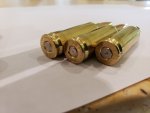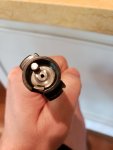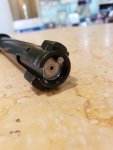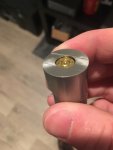Went to the range today to do a seating depth ladder test and after about 20 rounds I had 2 fail-to-fire (light primer strikes?), followed by 1 good round, followed by another FTF. At that point I called it quits. I've never, ever had this happen. I've successfully handloaded several thousand rounds (various calibers) with my single stage coax press and micrometer seater dies... so I'm a little confused. A bit more detail:
1) This was with new brass. I did full-length resize before loading.
2) I've always used CCI primers... this is my first time using Federal. I'm about at #80 in the box... I'd say these were primers 80, 81 and 83.
3) The action is an Impact Precision... only about a year old. I've probably got ~1200 rounds through it.
4) Before this range trip, i had taken the firing pin assembly and ejector out of the bolt to help measure lands. I've done this several times before and it went back the same way it always had. First 20 shots were fine.
So... what do yall think it could be? Something gunked up somewhere? Firing pin spring issue? Sorry if this is a stupid question (it feels like one) but before I start messing around figured I'd ask you folks. Thoughts? As always... thanks.
1) This was with new brass. I did full-length resize before loading.
2) I've always used CCI primers... this is my first time using Federal. I'm about at #80 in the box... I'd say these were primers 80, 81 and 83.
3) The action is an Impact Precision... only about a year old. I've probably got ~1200 rounds through it.
4) Before this range trip, i had taken the firing pin assembly and ejector out of the bolt to help measure lands. I've done this several times before and it went back the same way it always had. First 20 shots were fine.
So... what do yall think it could be? Something gunked up somewhere? Firing pin spring issue? Sorry if this is a stupid question (it feels like one) but before I start messing around figured I'd ask you folks. Thoughts? As always... thanks.





